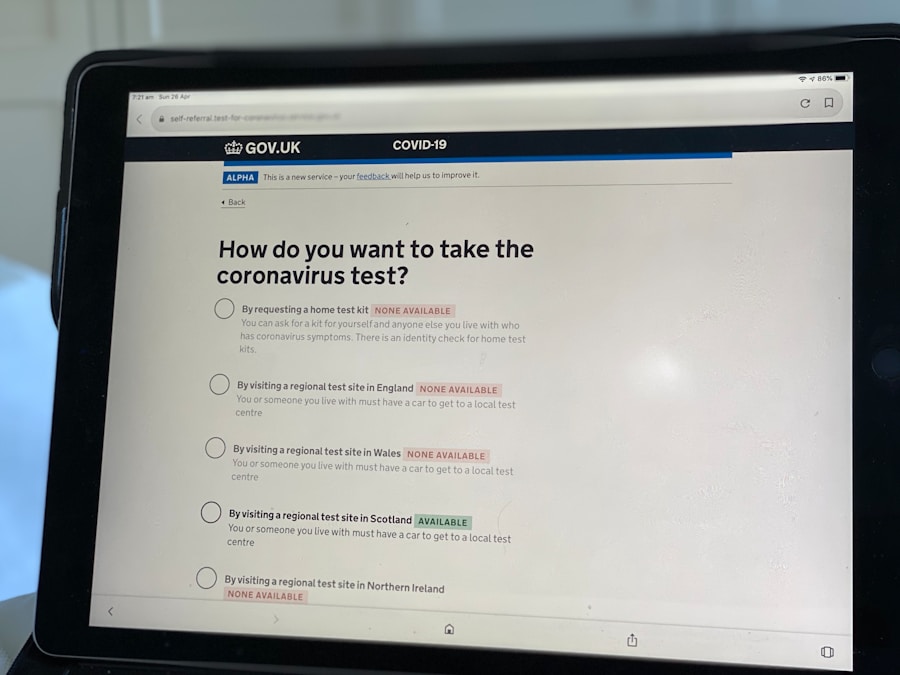
Interactive dialogues serve as a cornerstone in the educational landscape, transforming traditional learning paradigms into dynamic exchanges of ideas. Unlike conventional lecture-based approaches, interactive dialogues encourage active participation, allowing learners to engage with the material and each other in meaningful ways. This method not only enhances comprehension but also fosters critical thinking and creativity.
When students are invited to share their thoughts, ask questions, and challenge assumptions, they become co-creators of knowledge rather than passive recipients. This shift in dynamics can lead to deeper understanding and retention of information, as learners are more likely to remember concepts that they have actively discussed and debated. Moreover, interactive dialogues can bridge the gap between theoretical knowledge and practical application.
For instance, in a science class, rather than merely memorizing facts about ecosystems, students might engage in discussions about local environmental issues, sharing personal experiences and proposing solutions. This contextualization of learning makes the material more relevant and relatable, thereby increasing student motivation and engagement. The power of interactive dialogues lies not only in the exchange of information but also in the development of interpersonal skills such as empathy, active listening, and respect for diverse perspectives.
These skills are essential for success in both academic and professional settings, highlighting the broader implications of fostering interactive dialogues in educational environments.
Key Takeaways
- Interactive dialogues enhance learning by promoting active engagement and critical thinking.
- Engaging and meaningful conversations foster deeper understanding and retention of information.
- Technology can be used to facilitate interactive dialogues, making learning more accessible and interactive.
- Encouraging participation and collaboration in dialogues can lead to a more dynamic and enriching learning experience.
- Feedback plays a crucial role in interactive dialogues, providing opportunities for reflection and improvement.
Creating Engaging and Meaningful Conversations
To create engaging and meaningful conversations, educators must first establish a safe and supportive atmosphere where students feel comfortable expressing their thoughts. This can be achieved by setting clear expectations for respectful communication and actively modeling these behaviors. For example, teachers can initiate discussions by sharing their own experiences or opinions on a topic, which can help to humanize the learning process and encourage students to open up.
Additionally, using thought-provoking questions can stimulate deeper discussions. Questions that require analysis, synthesis, or evaluation can push students to think critically about the subject matter and articulate their viewpoints more effectively. Incorporating diverse perspectives into conversations is another vital aspect of creating meaningful dialogues.
Educators can achieve this by integrating materials from various cultures, disciplines, and viewpoints into the curriculum.
This approach not only enriches the conversation but also encourages students to consider alternative viewpoints and develop a more nuanced understanding of complex issues.
By rotating group members regularly, educators can expose students to a wider range of perspectives and foster a collaborative learning environment.
Utilizing Technology to Facilitate Interactive Dialogues

The integration of technology into educational settings has revolutionized the way interactive dialogues are conducted. Online platforms such as discussion boards, video conferencing tools, and collaborative document editing software provide new avenues for students to engage with one another beyond the physical classroom. For instance, during remote learning periods, educators have utilized platforms like Zoom or Microsoft Teams to host live discussions where students can participate in real-time conversations regardless of their location.
These tools not only facilitate dialogue but also allow for the inclusion of multimedia resources that can enhance understanding and engagement. Moreover, technology can support asynchronous discussions, enabling students to reflect on their thoughts before sharing them. Platforms like Google Classroom or Padlet allow learners to post their ideas at their own pace, fostering a more thoughtful exchange of perspectives.
This flexibility can be particularly beneficial for students who may need additional time to formulate their responses or who may feel more comfortable expressing themselves in writing rather than speaking in front of peers. Additionally, educators can leverage social media platforms to create informal spaces for dialogue where students can share articles, videos, or personal insights related to course content. By utilizing technology effectively, educators can create a more inclusive and engaging environment that encourages continuous interaction among students.
Strategies for Encouraging Participation and Collaboration
| Strategy | Metrics |
|---|---|
| Regular Feedback | Number of feedback sessions conducted per month |
| Recognition Program | Percentage increase in employee recognition nominations |
| Team Building Activities | Attendance rate at team building events |
| Open Communication Channels | Number of suggestions or ideas submitted through communication channels |
| Training and Development Opportunities | Percentage of employees participating in training programs |
Encouraging participation and collaboration among students requires intentional strategies that promote inclusivity and engagement. One effective approach is to implement structured group activities that require collective problem-solving or project-based learning. For example, assigning students to work in teams on a research project allows them to collaborate while developing essential skills such as communication, negotiation, and conflict resolution.
By assigning specific roles within each group—such as researcher, presenter, or note-taker—educators can ensure that all students have an opportunity to contribute meaningfully to the task at hand. Another strategy is to incorporate gamification elements into discussions. By introducing game-like features such as points, badges, or leaderboards for participation, educators can motivate students to engage more actively in dialogues.
For instance, using platforms like Kahoot! or Quizizz allows teachers to create interactive quizzes that not only assess knowledge but also spark conversations among peers as they discuss their answers and reasoning. Additionally, creating a culture of recognition where students acknowledge each other’s contributions can further enhance participation.
Simple practices such as giving shout-outs for insightful comments or encouraging peer feedback can foster a sense of community and belonging within the classroom.
The Role of Feedback in Interactive Dialogues
Feedback plays a crucial role in shaping the quality of interactive dialogues within educational settings. Constructive feedback not only helps students understand their strengths and areas for improvement but also encourages them to engage more deeply with the material and their peers. Educators should prioritize timely feedback that is specific and actionable; for instance, instead of simply stating that a student’s argument was weak, a teacher might highlight particular points that lacked evidence or clarity while suggesting ways to strengthen them.
This approach not only guides students in refining their ideas but also demonstrates that their contributions are valued. Peer feedback is another powerful tool that can enhance interactive dialogues. By encouraging students to provide feedback on each other’s contributions during discussions or group projects, educators foster a collaborative learning environment where learners feel empowered to share insights and suggestions.
Structured peer review sessions can be particularly effective; for example, after a group presentation, students could be tasked with providing constructive feedback on their peers’ performance based on predetermined criteria. This practice not only reinforces critical thinking skills but also cultivates a sense of accountability among students as they learn to articulate their thoughts respectfully and thoughtfully.
Incorporating Real-World Scenarios and Problem-Solving Activities

Integrating real-world scenarios into interactive dialogues enriches the learning experience by connecting theoretical concepts with practical applications. When students are presented with authentic problems or case studies relevant to their lives or future careers, they are more likely to engage meaningfully in discussions. For instance, in a business course, educators might present a case study involving a company facing ethical dilemmas; students could then debate potential solutions based on their understanding of business ethics and corporate responsibility.
This approach not only enhances critical thinking but also prepares students for real-life challenges they may encounter in their professional journeys. Problem-solving activities can further stimulate interactive dialogues by encouraging collaboration among students as they work together to devise solutions. For example, in a mathematics class, educators could present a complex problem that requires teamwork to solve; students might break into small groups to brainstorm strategies before sharing their findings with the larger class.
This collaborative approach not only fosters dialogue but also allows students to learn from one another’s thought processes and perspectives. By incorporating real-world scenarios and problem-solving activities into the curriculum, educators create opportunities for students to apply their knowledge in meaningful ways while developing essential skills such as teamwork and critical analysis.
Fostering a Positive and Inclusive Learning Environment
Creating a positive and inclusive learning environment is fundamental for facilitating effective interactive dialogues among students. Educators must prioritize building relationships based on trust and respect; this can be achieved through icebreaker activities at the beginning of the course or regular check-ins that allow students to share their thoughts and feelings about the learning process. When students feel valued and supported by their peers and instructors, they are more likely to participate actively in discussions without fear of judgment.
Additionally, promoting diversity within classroom conversations is essential for fostering inclusivity. Educators should strive to create an environment where all voices are heard and respected; this may involve implementing strategies such as rotating discussion leaders or using equitable participation techniques like “think-pair-share.” By ensuring that every student has an opportunity to contribute—regardless of their background or communication style—educators cultivate an atmosphere where diverse perspectives enrich the learning experience. Furthermore, addressing any instances of bias or exclusion promptly reinforces the importance of respect and empathy within the classroom community.
Measuring the Effectiveness of Interactive Dialogues in Learning
Assessing the effectiveness of interactive dialogues in learning requires a multifaceted approach that considers both qualitative and quantitative measures. One effective method is through student surveys or feedback forms that gauge learners’ perceptions of dialogue quality, engagement levels, and overall satisfaction with the learning experience. These surveys can provide valuable insights into what aspects of interactive dialogues resonate with students and which areas may need improvement.
Additionally, educators can analyze student performance data before and after implementing interactive dialogue strategies to measure academic growth. For instance, comparing test scores or project outcomes from classes that utilized traditional lecture methods versus those that emphasized interactive discussions can reveal significant differences in student understanding and retention of material. Observational assessments during class discussions can also provide qualitative data on student engagement levels; educators might take note of how often students contribute ideas or ask questions during dialogues as indicators of effectiveness.
In conclusion, measuring the impact of interactive dialogues on learning outcomes is essential for refining teaching practices and enhancing student experiences. By employing various assessment methods—ranging from surveys to performance data analysis—educators can gain a comprehensive understanding of how these dialogues influence student engagement, comprehension, and overall academic success.
If you are interested in exploring more examples of interactive learning through dialogues, you may want to check out this article on dialogue about a car accident. This article provides a scenario where individuals can engage in a conversation about a car accident, allowing for a practical and engaging way to improve language skills.
FAQs
What is interactive learning with dialogues?
Interactive learning with dialogues is a teaching method that involves active participation and engagement from students through the use of conversations and discussions. It encourages students to communicate, collaborate, and think critically while learning.
How does interactive learning with dialogues work?
Interactive learning with dialogues works by providing students with opportunities to engage in meaningful conversations with their peers and teachers. This can be done through group discussions, role-playing activities, debates, and other interactive exercises that promote active learning.
What are the benefits of interactive learning with dialogues?
Some of the benefits of interactive learning with dialogues include improved communication skills, critical thinking abilities, and problem-solving capabilities. It also helps students develop empathy, understanding, and respect for diverse perspectives.
What are some examples of interactive learning with dialogues?
Examples of interactive learning with dialogues include Socratic seminars, fishbowl discussions, think-pair-share activities, and peer-to-peer dialogues. These activities encourage students to express their thoughts, listen to others, and engage in constructive conversations.
How can teachers incorporate interactive learning with dialogues in the classroom?
Teachers can incorporate interactive learning with dialogues in the classroom by creating opportunities for students to engage in meaningful conversations, providing prompts for discussions, and facilitating group activities that promote dialogue and collaboration. They can also use technology to facilitate online discussions and virtual dialogues.



